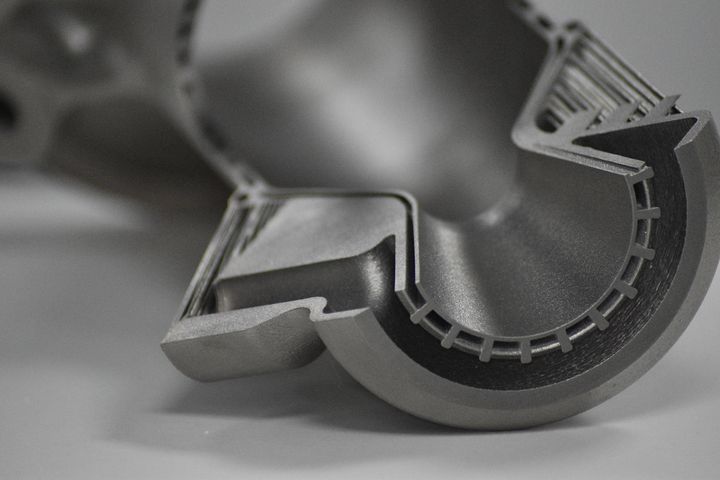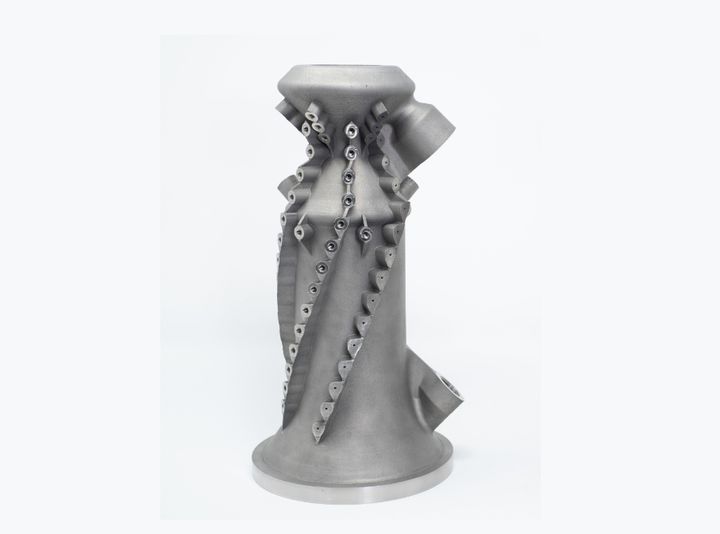
Alloyed announced the results of a project they’ve undertaken with Honeywell Aviation to assess a new high-temperature metal powder for aerospace applications.
Aviation has long been one of the leading markets attempting to leverage 3D printing’s unique capabilities. The combination of the ability to make lightweight parts plus an expectation of high part prices made the perfect opportunity for companies to explore the use of the technology.
That has indeed been done by several parties in the space, and now we see 3D printed parts being used in aircraft. Most of these parts are non-critical to flight operations, such as interior cabin wall coverings, or seating gadgets. Some metal 3D printed parts are used in engines, most notably from GE Aviation.
But these parts tend not to be the components that withstand the highest heat stresses. Alloyed explains:
“It is fair to say that, to date, metal AM processes have not performed well with the highest temperature materials — that is to say, materials for components that operate at the top of the temperature range within jet turbines. In the aerospace sector such applications would include, but are not limited to the critical areas of a turbine engine such as the back-end of the compressor, the combustor, the high and low pressure turbine areas, and the exhaust. All parts in these areas of the engine are exposed to high temperatures and higher levels of oxidation.”
Even more complicating is the fact that the alloys typically used are not great for welding and suffer from cracks if they experience a rapid thermal gradient. That’s definitely not characteristics you want to see in flight-critical aerospace components.
ABD-900AM

To counteract these effects, Alloyed worked with Aubert & Duval to develop a metal powder material for laser PBF production that overcame these problems. They introduced ABD-900AM this summer, and now Alloyed has announced a new assessment of the material. Honeywell Aviation apparently built an AM plant in India to perform the testing of the material.
Alloyed explains ABD-900AM:
”ABD-900AM is an age-hardenable, nickel-based superalloy designed specifically for use as feedstock in the L-PBF process. It is optimized for environmental resistance and high-temperature tensile strength, with a working temperature range up to 900°C (1652°F) in its age-hardened state. ABD-900AM not only offers a higher operating temperature but also significant long term stability. You can access the datasheet here.
Exhibiting excellent creep strength, ABD-900AM has also demonstrated superior resistance to cracking during manufacture and heat treatment, enabling complex part design. It is designed to be free of solidification, liquidation and strain-age cracks, and showcases exceptional printability for a 40% γ’-phase strengthened alloy. The ABD-900AM alloy also shows high as-printed part density of >99.9%.”
By the way, the “900” in the product name is a clue to ABD-900AM’s temperature resistance: 900C.
Honeywell Aviation tested AM-900AM in several dimensions to simulate the full production lifecycle, from printing, to recyclability, to post processing. From an operational point of view, the results were successful.
Sample parts were tested and found, as expected, to offer crack-free performance that was apparently comparable to normal casted nickel alloys when subjected to temperature gradients.
One factor not addressed by ABD-900AM seems to be the oxidation properties. They say:
“While ABD-900AM is not a replacement for CM Mar-247 in most cases due to the oxidation capabilities, it does exhibit very good mechanical properties at high temperatures when compared with Mar 247 or IN792 or IN713 or IN738.”
Nevertheless, it seems that Alloyed has produced a new material that can now be used for new types of aerospace applications.
Via Alloyed
